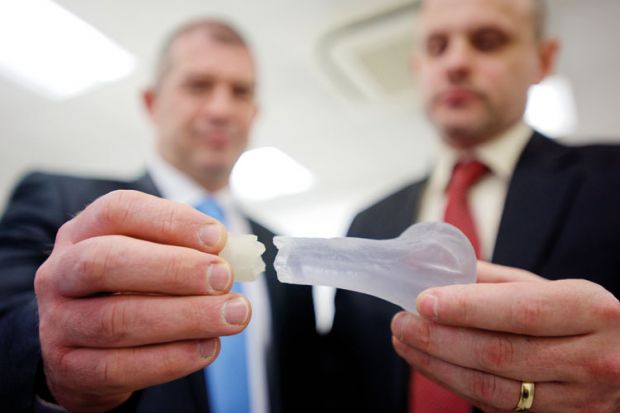Source: University of Warwick
Jigsaw fit: WMG’s expertise helped police match bones together exactly
Experts at the University of Warwick have helped West Midlands Police to convict a man who killed his friend before disposing of the body in a canal.
Last month, Lorenzo Simon was convicted of murdering Michael Spalding then dismembering the body, stuffing it inside two suitcases, and throwing them into a canal in Birmingham.
The 34-year-old was found guilty of murder and sentenced to 19 years in jail; his girlfriend, Michelle Bird, 35, was cleared of murder but sentenced to two and a half years in prison after admitting to assisting an offender.
However, had it not been for 3D technology based at WMG, a unit of the university, the conviction at Birmingham Crown Court might never have been secured.
Detectives searching the couple’s garden recovered part of the victim’s humerus from an oil drum that had been used as a furnace to destroy evidence. Using the fragment, experts from WMG were able to prove that it was a seamless fit with a limb found in one of the suitcases.
The same 3D scanning technique was also able to prove laceration links between a saw recovered from the canal bed and marks found on the victim’s bones.
Using the technology, WMG X-rayed nine pieces of bone from a range of angles, collating thousands of images that allowed detectives, forensic experts and Crown prosecutors to examine the evidence in remarkable depth. The technique allows images to be displayed at a resolution 43,000 times more detailed than a hospital CAT scan.
Mark Williams, head of product evaluation technologies at WMG, said that the fragment of humerus recovered from the oil drum was “a perfect jigsaw fit to another piece of bone and could show in minute detail – down to one-17,000th of a millimetre or half a hair’s breadth – the cuts on the bones”.
“That helped officers match the serrated edge of the saw to many of the indents and showed they’d been inflicted with a blade width of 1.4mm,” Professor Williams said. “We made exact 3D print replicas of the bone to demonstrate the evidence to the jury. This combination of micro-computerised tomography scanning, 3D printing and 3D virtual reality truly makes the process a UK first.”
The work was not, he said, about trying to prove someone’s guilt, but about “helping to understand a case and getting to the truth”.
Unlike traditional post-mortems carried out by pathologists, 3D scanning can produce high-definition images without the need for an invasive procedure. It is, however, expensive, and according to the University of Warwick would be beyond the fiscal reach of most police forces.
In return for access to the technology and forensic experts, West Midlands Police funds a three-year forensic PhD placement at WMG.
“It’s a perfect collaboration and hugely rewarding being involved in major crime investigations knowing our work is helping convict offenders and secure justice for grieving families,” Professor Williams said.
Register to continue
Why register?
- Registration is free and only takes a moment
- Once registered, you can read 3 articles a month
- Sign up for our newsletter
Subscribe
Or subscribe for unlimited access to:
- Unlimited access to news, views, insights & reviews
- Digital editions
- Digital access to THE’s university and college rankings analysis
Already registered or a current subscriber? Login






